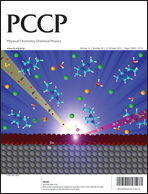The current study extends our work with spiropyran-merocyanines (SP-MC) as molecular photoswitches by delving into the effects of viscosity. This has led to the interesting finding of a dichotomy in viscosity dependence. Solutions of SP [6′-nitro-1,3,3-trimethylspiro(indolino-2,2′-benzopyran)] in a wide range of ethylene glycol–methanol (EG–MeOH) media (3.59 to 17.9 M in EG) were irradiated 90 s (365 nm). The absorbance at 90 s of MC (532 nm) formed photolytically varied with solvent. The least viscous medium yielded the highest concentration of MC and yields declined with increasing viscosity. Once irradiation ceased each system achieved thermal equilibrium. Molecular dynamics studies of typical thermal reactions governed by electronic and steric factors show that the transition state is achieved primarily after solvent reorganization has occurred to accommodate the new structure. It follows that in such thermal reactions viscosity may not cause any hindrance to the motion of atoms in molecules because solvent has already rearranged. In contrast, photochemical excitations occur at much higher rates (10−15 s) than solvent reorganization, i.e. dielectric relaxation (10−10 to 10−12 s). The viscosity dependence of photochemical MC formation suggests that a major geometrical change is required for excited SP to be converted to MC. The dichotomy in dependence on viscosity is confirmed by the thermal equilibration of SP and MC. The equilibrium constant for the process increases three-fold (from 0.0535 to 0.158) as the EG content of the medium increases. However, the forward rate constant (SP → MC) is almost invariant with EG content or viscosity. The process is viscosity independent. The increase in the equilibrium constant with EG concentration is a result of a decline in the reverse rate constant for MC cyclisation to SP. This is attributed to special stabilisation of the MC that increases with increasing EG concentration. The present study, to our knowledge, is the first to dissect viscosity from solvent stabilisation factors in SP-MC systems. Further, the study highlights the fundamental difference between photolytic and thermal processes, providing another avenue of control for these SP-MC photoswitches.

You have access to this article
 Please wait while we load your content...
Something went wrong. Try again?
Please wait while we load your content...
Something went wrong. Try again?


 Please wait while we load your content...
Please wait while we load your content...